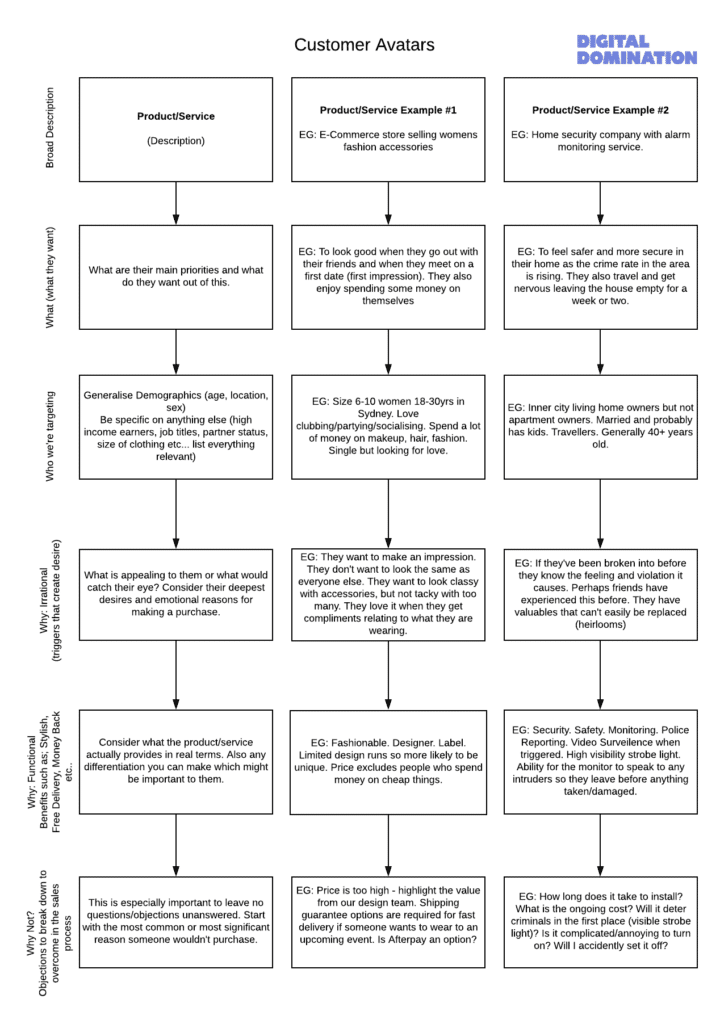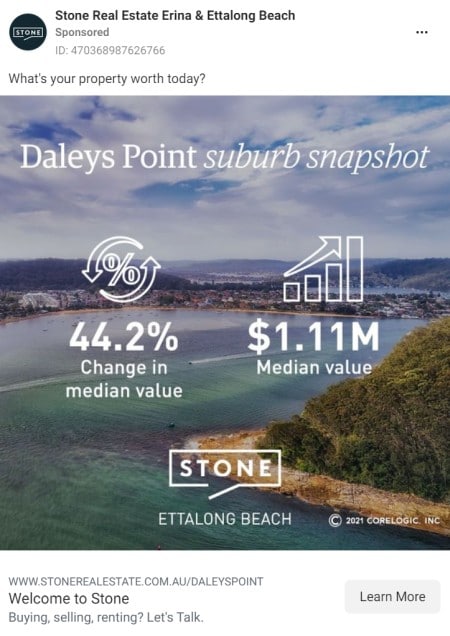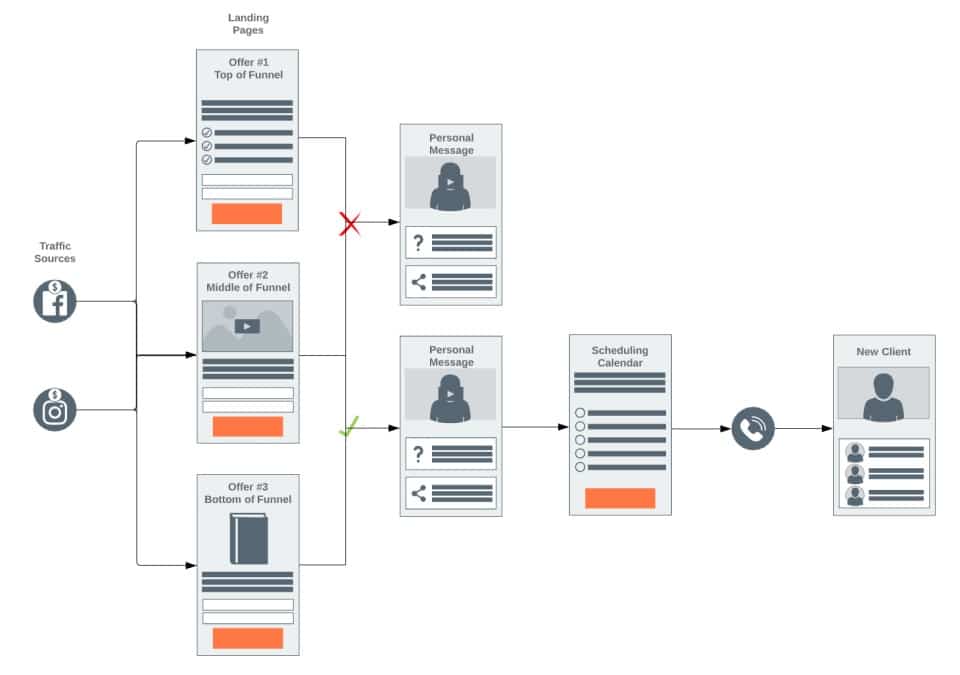10 Ways To Improve Lead Quality With Digital Marketing
Ever wondered how you can improve lead quality and get better leads for your sales team?
Lets face it; Low quality leads suck the enthusiasm from your sales team faster than a fat straw in a can of coke on a hot day.
If your sales team feels that way, you’ll widen the affinity gap between your sales and digital marketing team as each will feel that the other isn’t supporting their needs. Sales feel that Marketing isn’t delivering quality leads and Marketing feel that the Sales team aren’t following up on the leads they generate.
So how can you improve lead quality from your lead generation campaigns before they reach your sales team and CRM?
Today I’m going to share my best 10 tips to improve the lead quality from your digital marketing campaigns so your sales team fall in love with your lead generation all over again.
Lets first address one concept: Lead quality will vary from different sources and online campaigns.
For example: The quality of a lead from Google Ads will often be very different to a lead from a Facebook lead form and both are significantly different than leads by referral.
So in order to maximise your quality, review these 10 ideas and apply them to each funnel if they are relevant.
10 Ways To Improve the Quality of Your Leads
As a performance agency, we specialise in finding ways to generate results effienciently and cost-effectively across any platform or medium where our clients customers are found.
To improve the quality of leads, it’s important to review your marketing strategy from the top to bottom of your sales funnel.
So here are our 10 best steps you can use in your marketing campaigns to get high quality leads.
1. Define your Customer Avatar
A customer avatar (or buyer persona) is simply a fictional character you make up that defines the traits of your perfect customer.
This could be the most overlooked steps by business owners and marketing managers. Especially for an established business – because it almost seems too obvious as to who their customers are.
However the better the detail you have on your customer avatar, the better your campaigns and leads become. Your sales process is also far easier.
We find that breaking down the avatar is easier when you use a template.
First start with a broad description of your product or service. If you have a lot of products then categorise them first and then create as many avatars as you need to cover your range.
Then answer the What, Who, Why (Irrational), Why (Functional) and finally the Why Not.
Here’s our Customer Avatars template with some examples;

2. Optimise For The Buyers Journey
The buyers journey is simply the path customers take from the time they first become aware of their need for a product/service, to the time they make the purchase.
The buyers journey consists of three phases;
- Awareness – Customers first become aware of the need for product/service
- Consideration – Customers identify the possible solutions and weigh their options
- Decision – Customers short list their options and do a final comparison before purchasing.
Since the buyers journey is different for every business, we recommend you map each phase out. This makes it easier to understand, in advance, how people will respond to ads.
Visit Building Boom for a detailed breakdown of the buyers journey when someone is building a new home.
Future customers in the Awareness phase will be less qualified than those in the consideration phase. Those in the consideration phase will also be less qualified than those in the decision phase.
We always recommend advertising for the full buyers journey in an established sales funnel. But if you’re after the quickest wins and most qualified leads when you first start, focus on the Decision phase first.
3. Speak The Right Language For Your Ideal Customer
If you’ve dealt with a digital agency before, you’ve probably heard us use jargon like SEO or PPC or ROAS or Split Testing or… or… or… (you get the point).
For most clients, they don’t know the jargon as they don’t use it daily. So often our most important messages are misunderstood when we speak our language instead of our customers language.
However, if we changed the language we use, our messages become clearer for our customers;
- SEO – We get you onto page 1 of Google
- PPC – We manage your paid ads on Google and Facebook
- ROAS – We track and report on your return on investment
- Split Testing – We create and manage your ads so the best ads always show
The same is true for almost every industry. If you use industry terms, you might alienate those who feel silly for not knowing what they mean. No one likes to feel that way.
However, using technical language at the right time, can help you qualify people.
Using the buyers journey example, a real estate agency may create an ad that reads;
“How much is your home worth?” in the Awareness phase. This could be a great ad because many dinner table discussions begin with this question. Couples thinking of moving will often ask each other “how much could we get for our home”?
The quality of leads at this early phase will be lower when compared to the decision phase – where different language is used.
Lets dive in a little deeper here;
Many people have this conversation of “how much is our home worth” but how many of them are committed to sell and move on? Not many. They are simply exploring their options. In fact, some may be asking the question not because they want to sell, but because they want to re-finance or draw down against their home to book a once in a lifetime international holiday. They may have heard of someone else selling for more than expected and they were just curious about their current value… So you should expect lower quality leads with this kind of ad, using this language.
Customers in the decision phase will have already moved through the Awareness and Consideration phases. They would already know roughly how much their home is worth. Now, they’re ready to sell and move on. So these customers will be looking for a formal ‘appraisal’ so they can choose who is going to sell their home.
You ideal customers have now moved from speaking in generic terms, to speaking in specific terms.
Instead of “How much is your home worth?” – they will now respond to an ad that says “Get your free Property Appraisal”.
4. Clear Call To Action
A common mistake we see in advertising is that the calls to action aren’t clear. In the worst cases there is no call to action at all.
So it’s no surprise some ads have shockingly low conversion rates and generate low quality leads.
The frequency of this happening has escalated over recent years due to ads being easier to create on digital platforms than ever before. So everyone from a small business owner to the office receptionist are publishing ads – often without any training in advertising.

What is this ad’s message and call to action?
I have no idea… because the copywriter is confused.
“What’s your property worth today?” (Only relevant for home owners)
“Welcome to Stone” (Bland branding message that could be improved)
“Buying, selling, renting? Let’s Talk.” (Buyers, Sellers & Renters = Anyone who lives in a house)
Call to action = “Learn More” (Learn what?)
This is three different ads rolled into one.
This could have easily become three (or four) different, distinct lead generation ads to each audience. One for buyers, one for sellers, one for renters – and possibly a branding ad all on its own for re-targeting website visitors.
Broad calls to action can work in two ways, either you’ll get an abundance of leads which most will be unqualified, or you’ll get very little leads, if any.
So creating a clear to call to action in your advertising will help generate leads that are highly relevant to that call to action.
If the above ad had said “Property prices in Daleys Point have increased by 44.2% – Maybe it’s time to sell? Get your free appraisal today from the professional team at Stone Real Estate”
5. Improve Your Form Fields
Web page forms and lead forms inside Facebook Ads play a big role in qualifying your leads.
New leads that have filled out comprehensive forms with personal information are nearly always more qualified than those that simply pass on a name, email and a phone number.
But the problem is that users often find complicated forms take too long to fill out, especially on mobile devices. So they leave and you miss a potential deal because of it.
This is an obvious break point. A spot in your sales funnel that can break the funnel altogether if not done well. So our usual recommendation is to err on the side of caution.
Only ask for the minimum amount of information you need to contact the lead.
However (Facebook Lead Ads especially) this will mean a lot of unqualified leads will come through to your sales team.
People over the age of 40 often don’t know how to back out of a Facebook Lead Ad form and so will click through quickly to get back to where they were, as opposed to using the back button on their mobile device.
You’ve probably made calls to these people and they ask “How did you get my number?”. Little do they know that Facebook automatically entered their details for them.
If you’re at this stage, then improving your form fields will help. Going beyond the standard information will require some effort, even if it’s only one or two extra fields. Only those really interested will complete the form and this will filter our a lot of time wasters.
6. Ask High Level Questions
If you’re in the business-to-business sector getting a lead from someone that isn’t a decision maker is often a big waste of time. So asking high level questions on your forms can alleviate that.
Information only the Owners or Management team would know will prevent junior staff from completing these forms as they become stuck halfway through completing the form.
So consider your ideal customers and tailor a couple of high level questions to filter your leads.
For us, we ask how much businesses spend on advertising each month along with a few other high level questions – which tends to get us the decision makers details first time.
7. Add Sensitive Questions
Similar to the high level questions, asking sensitive questions can help.
If you’re in the finance business, asking how much equity someone has is a very personal and sensitive question. Most people want their financial situation to be kept private, so if they’re willing to share that information, it’s highly likely they’re a real lead.
Likewise, questions regarding health, partner status, personal goals and more can eliminate those who aren’t serious about working with you.
So asking sensitive questions can improve the quality of leads coming through your sales pipeline.
8. Add Time-Based Questions
Some business types have a very long sales cycle that may extend beyond 12 months.
Consider new home builders. People wanting to build a new home may spend months or years researching before they finally decide to sign a building contract. This is especially true if they are going to knock down their existing home.
In these situations, asking time-based questions on your forms will help you prioritise leads by using filters.
For example: Using a dropdown box with multiple choices can help.
Question:
When are you wanting to build?
Dropdown Menu Choices:
- Within 6 months
- Within 12 months
- Within 18 months
- Longer than 18 months
9. Indicate Pricing Requirements
This is very simple, but including a ‘From $’ price tag on an ad will help remove those who simply don’t have the budget to buy from you.
Another option is to include pricing levels or spend levels on your forms – so customers can select which best suits them before they complete their form.
I recommend using pricing with caution though. There have been so many times that people have indicated a very low budget initially, only to follow through and spend far more than they initially said they would.
10. Add a Second Step In The Qualification Process
So now that your ads are better defined with clearer calls to action and your contact forms are finely tuned, what else can you do to improve lead quality?
Add a second step once the form has been filled out.
This process refines the qualification process and can help as an additional filter to reduce sales calls with redundant leads.
This can either be a direct action to a second landing page or through marketing automation. In the case of the latter, the marketing automation can help validate the customer has entered a valid email address or phone number if you use SMS marketing. Those that don’t respond to those marketing automation triggers become ‘unqualified leads’.

In the above example, multiple ads run and based on the qualifications on the form, prospects see one of two messages.
The first would show if they’re not qualified. EG: Not enough budget, too far away from purchasing, unrealistic goals etc… The second is a personal message that asks the prospect to book in a meeting directly into a sales reps calendar.
This second step in the filtering process helps to cut out unqualified leads as well as those that aren’t invested in meeting with your sales team.
Now that you know my 10 tips to improve lead quality, go and make a few adjustments to your lead generation advertising campaigns, lead forms and follow up sequences.
If lead quality improves, see if you can refine the process again in each stage of your advertising campaigns. This will help you fine tune your lead generation sales funnels to give you the best results over time.
